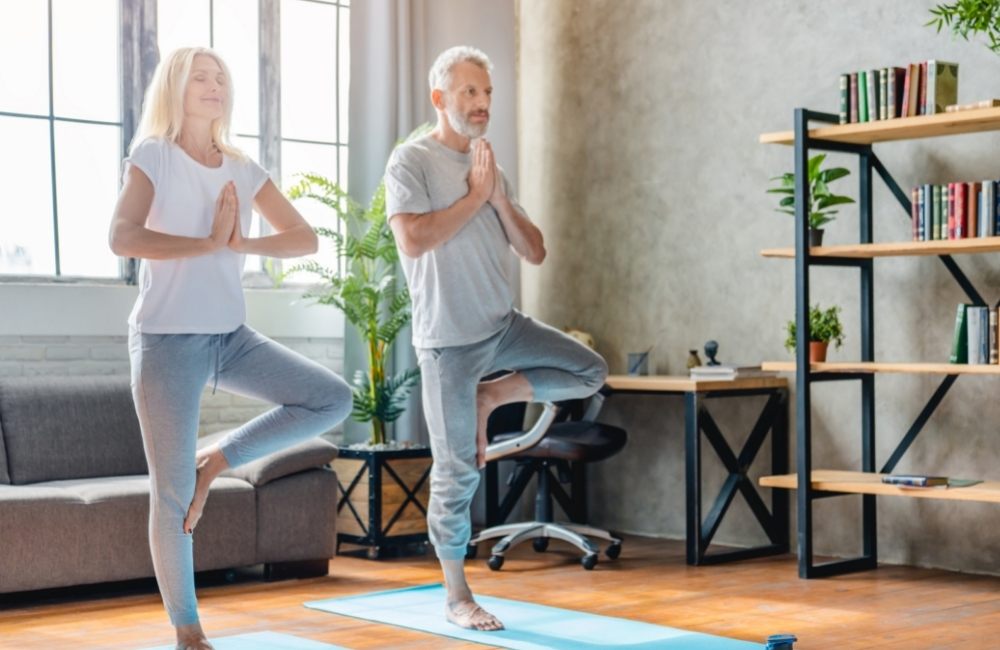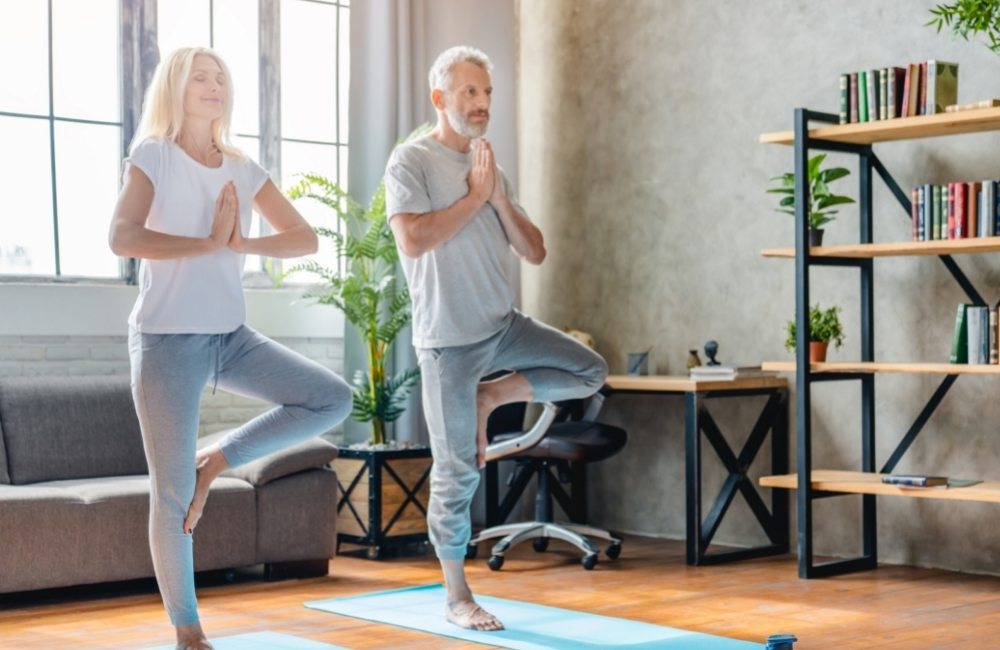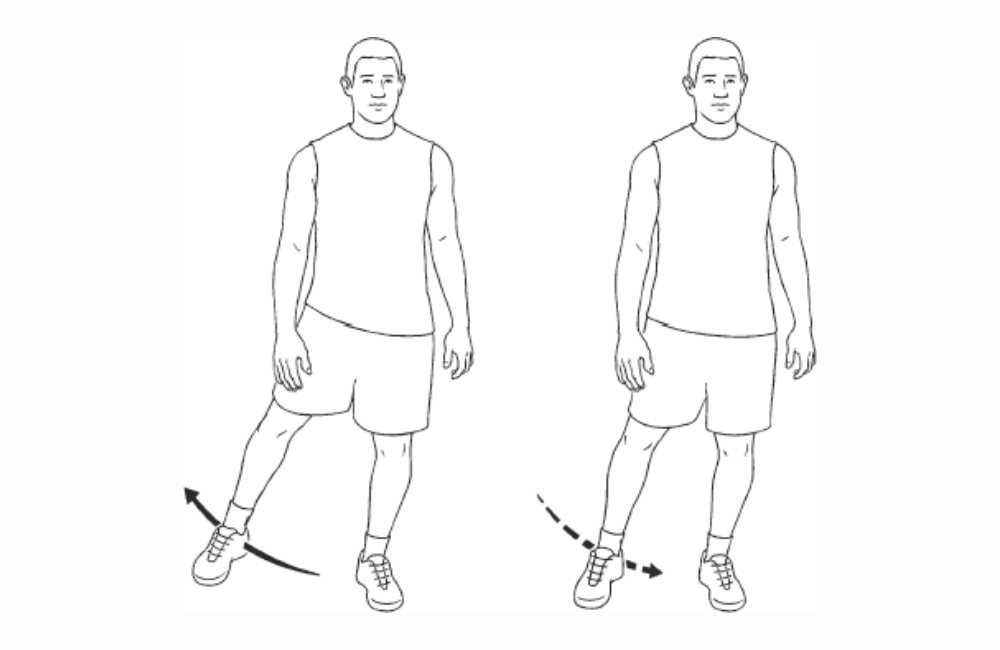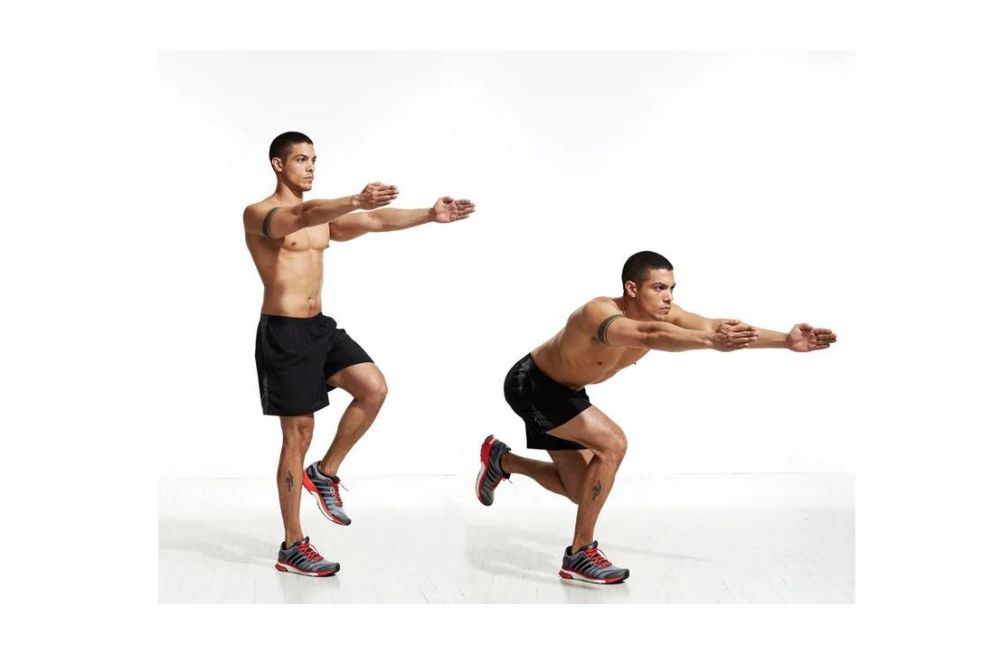
Feeling a little off balance lately? You’re not alone. Balance is one common aspect of your fitness you may begin to lose as you get older.
As you lose some muscle mass and flexibility with aging, your balance gets a little off too. While being a little off balance may not sound so pivotal, it can bring instability, which increases your chance of falls and injuries.
With aging, there are tons of other hurdles too. For instance:
- Our metabolism slows down.
- We may have more trouble remembering things.
- We’re at higher risk for many different diseases.
Of all the issues experienced in our later years, the decreased balance might be the most devastating. Balance is a necessary component of walking, standing, and many other functional activities. Therefore, when we start to lose our balance, we also begin to lose our independence.
In this article, we will review the concept of age-related balance loss and outline some exercises to help counteract this phenomenon.
You may also like:
Science Says Doing This Specific Exercise Will Slow Down Aging
A PT Shares the 7 Stretches He Does Every Day To Keep His Body ‘Young and Healthy’
What Causes Us to Lose Our Balance As We Age?

There are numerous factors that lead to age-related balance loss. In this section, we’ll review some of the major causes of falls and balance deficits in older people.
Decreased Strength
As we age, we naturally lose some muscle through a process known as sarcopenia.
Because of this, our muscles are often not as strong and stable. This makes it difficult to reorient our bodies when we lose our balance or misstep.
Whether or not sarcopenia is an inevitable process of aging is up for debate. However, it is widely agreed upon that we can take steps to mitigate age-related muscle loss.
Joint Stiffness
There is a substance found within our joints known as synovial fluid. Synovial fluid lubricates our joints and allows us to move with more ease.
With the passing of time, the amount of synovial fluid within our joints decreases. Furthermore, old age is associated with a wearing down of joint cartilage.
Because of these two joint issues, older adults may have increased joint pain and decreased flexibility. This makes it harder to perform quick, stabilizing movements. Therefore, it is more difficult to balance because of this issue.
Decreased Kinesthetic Awareness
There are two related terms that deal with our ability to perceive the position of our bodies in space: kinesthetic awareness and proprioception.
Both of these abilities tend to decrease as we get older. As a result, we often experience falls and losses of balance. This is especially true when we’re in unfamiliar environments or trying out new physical activities.
Having less kinesthetic awareness and proprioception is a huge risk factor for falls.
Vestibular Issues
One of our major balance centers is known as the vestibular system. The vestibular system is located within our inner ear.
When we get older, the fluid within the vestibular system tends to thicken. This can make it harder for our vestibular system to react to changes in balance or position.
A common issue related to the vestibular system is known as Benign Paroxysmal Positional Vertigo (BPPV).
This problem is experienced by thousands of people every year. Luckily, simple treatments performed by a physiotherapist or physician can improve symptoms significantly.
Loss of Vision
Much like all of the other issues we’ve discussed, vision decreases with age. For most people, balance is primarily controlled via the eyes.
Therefore, when it gets harder to see what’s around you, you are more likely to trip, lose your balance, and fall.
Impaired Reflexes
Reflexes are automatic movements that occur in response to stimuli. For example, if you touch a hot stove, you’ll reflexively pull your hand away.
Reflexes also factor in heavily when we think about balance. We reflexively lean to the left when we’re being pulled to the right, and vice versa.
With diminished reflexes, it can be hard for us to react in time when something pushes us off balance.
How Can You Improve Your Balance Later In Life Through Exercise?
Unfortunately, we don’t have good ways of addressing all of the causes of age-related balance loss.
However, we do know that there are many good strengthening exercises that can help you stave off some of the issues described in the previous section.
In this section, we’ll review the top exercises for improving balance later in life.
1. Standing Hip Circumduction
The hips are a critical piece of the puzzle when it comes to balance.
By keeping the hips mobile and strong, you can prevent many balance issues. This exercise forces you to balance on one leg, which builds strength in the stance leg. At the same time, you move your non-standing leg in a wide, full range of motion.
How to Perform:
- Stand on your right leg.
- Bring your left hip up toward your chest, then rotate it outward in a circle.
- Complete the circle by bringing your left knee to your chest again.
- Then, reverse directions, making a circle with your hip in the opposite direction.
- Complete 15 circles in each direction, with each hip, once per day.
2. Unilateral RDLs
Romanian deadlifts are phenomenal for increasing strength and stability. When performed on one leg, the benefits increase exponentially.
Best of all, if this exercise becomes too easy for you, you can add weight and increase the challenge!
How to Perform:
- Stand on your left leg.
- Slightly bend your knee and hinge forward at the hips. At the same time, kick your right leg straight out behind you.
- Be sure to keep your back perfectly straight.
- By squeezing your glute muscles, return yourself to a standing position.
- Complete 10-15 reps on each leg, one time per day.
3. Hip Abduction in Standing

The hip abductor muscles are incredibly important for older adults. This group of muscles is notoriously problematic. When the hip abductors are weak, hip fractures and falls are much more likely.
Therefore, strengthening these muscles is critical for fall prevention and good health.
How to Perform:
- Stand on your right leg.
- While maintaining your balance, kick your left leg out to the side, in line with your body.
- Be sure to keep your left toes pointed directly forward the whole time.
- Return the leg to the starting position and complete 10-15 reps on both sides, once per day.
4. Skater Squats

Professional skaters have incredible mobility in their hips. For this reason, mimicking some of the common movements seen in skating can go a long way toward improving strength and mobility in this area.
Skater squats require tremendous balance to perform correctly. So, be sure to take your time before you reach too far on this exercise.
How to Perform:
- Stand on your left leg.
- Wrap your right leg behind and across your left leg as far as you can, pretending as if it is a tail.
- Touch your right toes to the ground ever so slightly as you squat down with your left leg slightly.
- Return to the starting position without touching your right leg to the ground, if possible.
- Repeat for 10-15 reps per side, once per day.
5. Single Leg “Catch”
This exercise incorporates some visual and proprioceptive strengthening. By playing a game of catch with yourself, you can significantly improve your coordination, while simultaneously improving your balance.
How to Perform:
- Stand on your right leg, holding a small ball in your left hand.
- Throw the ball in the air a few inches, then catch it with your left hand.
- Repeat for ten throws, then switch legs and hands.
- Complete 10 throws per hand, per day.
Conclusion
Many of us are nervous about the changes we are likely to encounter as we get older. But while we can’t control everything that happens to us, we can decrease our chances of falling. We can work on this area of our health by performing daily exercise.
If you’re noticing some balance issues, or if you want to avoid them altogether, try this routine out today!


